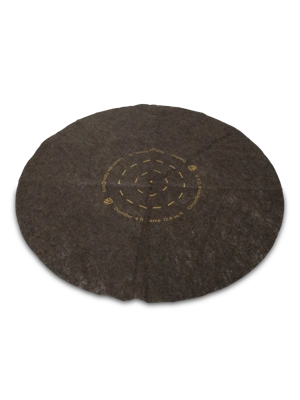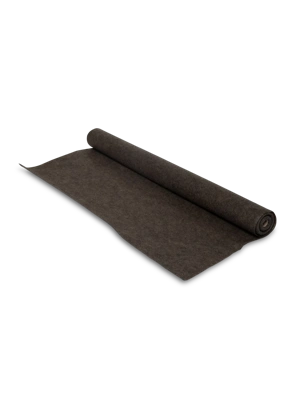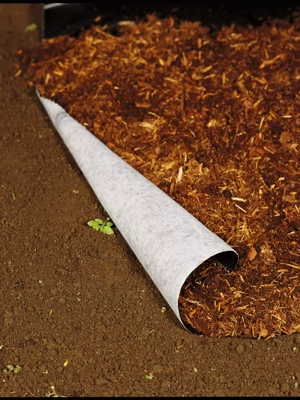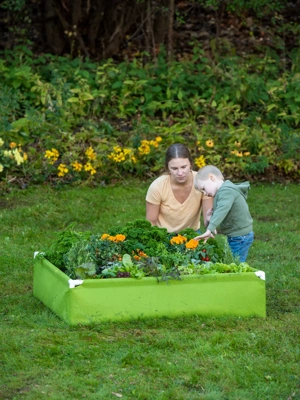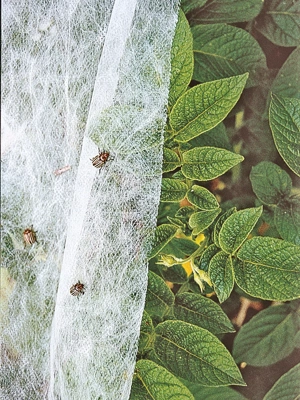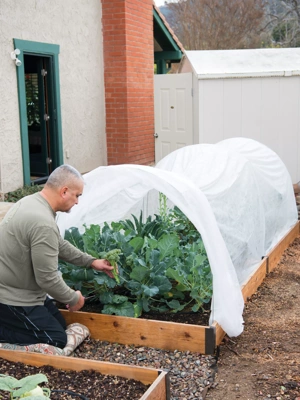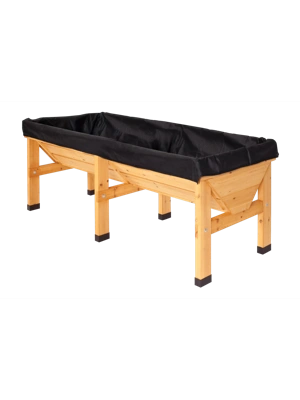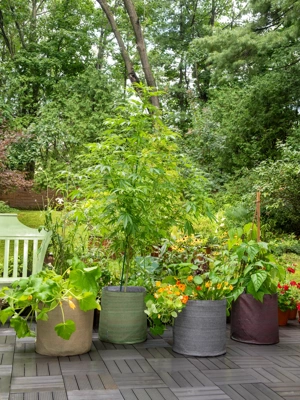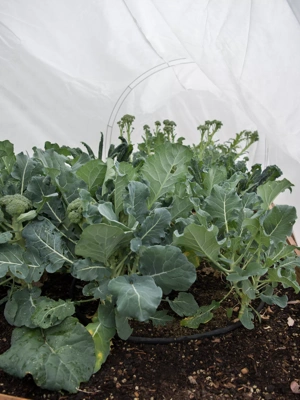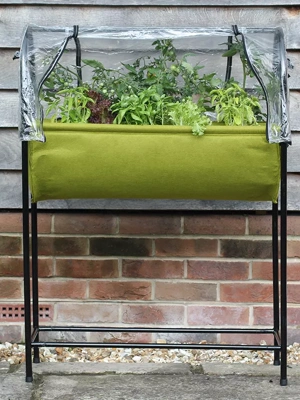Second Plantings
 Broccoli raab is a good second crop. Shown here on Sept. 28, it was planted on Aug. 25.
Broccoli raab is a good second crop. Shown here on Sept. 28, it was planted on Aug. 25.Many gardeners plant their entire garden once each year, in the spring. When you garden in raised beds, it’s easy to keep every square foot in production from early spring right through summer, fall and early winter. In this way, gardeners in almost every growing zone can increase the amount of food they produce by 50 or even 100 percent.
Lettuce, radishes and peas are fast-growing, cold-tolerant crops that can be planted as soon as the soil is dry enough to work and will be ready to harvest in 40 to 60 days. Crops that get planted in mid-April, will finish producing and be ready for the compost pile by mid- to late-June. Loosen the soil, add some compost, and that space is ready for the next crop. Because peas absorb nitrogen from the air and add it tothe soil, the place where they were growing becomes a premium location for whatever crop you plant there next.
Not all vegetables are easy to get started in the hottest part of the summer. Shade netting or garden fabric (row covers) can be extremely helpful for keeping the soil moist and the temperature cool. Shop for heat-tolerant varieties, and consult our Vegetable Encyclopedia to see which crops will tolerate heat and which don’t.
Broccoli, kale and Swiss chard are plants that perform well when planted in mid- to late summer. At that time, you probably won’t be able to find veggie starts at your garden center, so you will need to start your own seedlings. You may wish to start them indoors where it's easier to regulate light, temperature and moisture.
Lettuce, spinach, arugula and other greens can be re-planted once a month, all summer long. Pull mature plants as soon as the leaves start to elongate and the plants go into flowering mode. Once this happens the leaves get bitter. Lettuce seeds are tiny, so if you sprinkle a pinch or two on the soil surface, you may wind up with many plants, all crowded together. Once they are 2″ tall, dig up and separate some of the seedlings and replant them somewhere else in the garden. Do this again and again until the original planting has the right amount of plants. A friend or neighbor will usually be glad to get a cup full of seedlings.
Transplanting should be done at dusk or on a rainy day to avoid sun and heat damage. Water well initially and then every day until the plants get established. In hot weather, transplants will require protection from the sun. Anything that reduces the sun’s intensity and provides some wind protection will help. Shade netting is ideal and row covers also work. You can even set up a card table over the bed for some temporary shade, or make a tent out of an old sheet. In a snugly-planted raised bed, sometimes the shade of neighboring plants is all that's needed.
Last updated: 06/15/2023
Print this Article:
Related items
Get the Dirt
Stay up to date on new articles and advice. Please fill out the information below.


